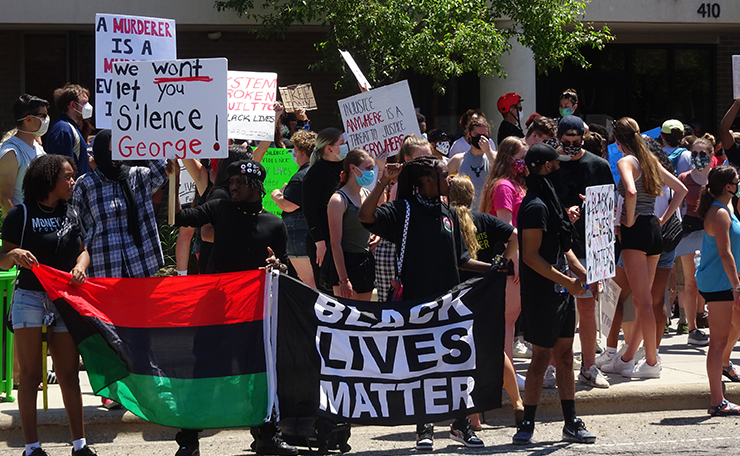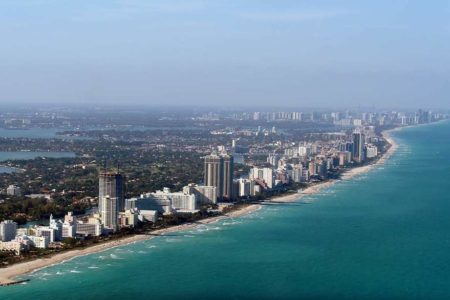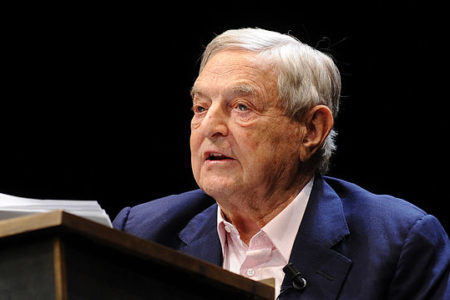
On the evening of June 1, 2020, the Black Lives Matter protest came to the sleepy beach town of Huntington Beach, California: about 500 protesters, most of them white, denouncing police brutality against black men.
A diverse group of students, retirees and mothers with children faced off against about 200 police officers, some mounted on horses, many of them Hispanic.
There had been a report that more ominous Antifa demonstrators were being bused in to loot local shops, so about 30 stores had boarded up their windows with plywood, just in case. The police found weapons hidden in several alleys, including cinder blocks, weights and rocks, indicating plans for possible violence.
Yet in the end, little happened. The demonstrators chanted “I Can’t Breathe” at the cops, held up signs for TV camera crews, then left. This is what occurred in most small and medium towns across America.
But in America’s cities, it’s a different story.
For a week now, Americans have been sitting in front of their televisions, transfixed, as cities across the United States erupt in riots not seen since the 1960s. At least 40 major cities have imposed curfews, with 23 calling in units of America’s National Guard to restore order.
After two months of strict lock-downs engineered primarily by Democratic mayors and governors, some 40 million Americans are now unemployed, most of them without savings, many with no hope of returning to work.
When people ventured out to beaches or parks for fresh air, some of the overzealous mayors and governors ordered arrests and imposed U.S. $7,000 fines.
Not surprisingly, the entire country, like the entire world, has been on edge for weeks.
And then came the tragic death of George Floyd, an African American man killed or allowed to die on May 25 at the hands of Minneapolis’s ethnically diverse police department.
Like the police beating of Rodney King in Los Angeles nearly 30 years ago, the brutal treatment of Floyd triggered an explosion among disparate groups across the country – the black community, extreme left groups like Antifa, and run-of-the-mill criminals, thugs and looters.
Most Americans, including most police officers, appear to be sincerely outraged by what happened to Floyd. Police chiefs across the country denounced the actions of the officer involved.
Yet what happened to Floyd was hardly unique – and not confined to black males.
Three years ago, a 40-year-old Australian yoga instructor named Justine Damond called the Minneapolis police to report what she thought was a sexual assault then taking place.
When Minneapolis police arrived around 11:30 pm, Damond ran up to the squad car to report what she had heard. One of the police officers, a Somali immigrant named Mohamed Mohamed Noor, reached across his partner in his squad car and, through the car’s open window, shot Damond in the chest, killing her.
There were no riots for Damond, no quick arrests for the officer involved.
Instead, nine months after the shooting, a warrant was finally issued for Noor’s arrest. He was convicted a year later of third-degree murder and second-degree manslaughter, a conviction the Somali Police Association said was racist.
According to The Washington Post’s Fatal Force database, which claims to track every police shooting in the United States, since 2015 America’s various police agencies have shot or otherwise killed a total of 5,360 people – about three per day on average.
Of those, 887 were Hispanic, 1,262 were black, and 2,412 were white. Another 799 were unknown or “other.”
The media often highlight the cases involving black men, because that fits the narrative of “systemic” white racism, but the reality is that police shootings are not perpetrated solely, or even primarily, against black males.
There are literally hundreds of cases every year of American police shooting to death white males (and a few females) who confront police with weapons, or, in a handful of egregious cases, fail to comply with police orders.
In December 2010, a drunk white man named Douglas Zerby, 35, was sitting on his porch in Long Beach, California, playing with his garden hose. Responding to a false report that a man might have a gun, two police officers approached, and, seeing the hose and without issuing any commands, opened fire, shooting Zerby 12 times. The Long Beach prosecutor declined to press charges against the two officers.
In 2011, a white homeless man, Kelly Thomas, the son of a retired L.A. Police Officer, was killed by three members of the Fullerton, California police department when they beat him to death for failing to obey their commands. The officers were eventually tried for second degree murder and involuntary manslaughter but acquitted by a jury.
In 2012, two police officers in the sleepy community of Bainbridge Island, Washington, responded to a call of a mentally ill man, who was white, yelling in the garage apartment of his parents. One of the officers ordered the man to drop an axe he was holding and, when he refused, shot him dead. A jury acquitted the officer of using excessive force.
Examples such as these fail to mollify media critics who claim the police are inherently racist.
The critics point out that, while more whites are killed annually by police than blacks, blacks are only 12.1 percent of the U.S. population.
The critics say that this means that African Americans are 2.5 times more likely to be killed by American police than are white people – 30 deaths per million for blacks versus 12 deaths per million for whites — and point to this fact as proof that “systemic” racism permeates American society in general and the police in particular.
“There are two viruses killing Americans,” said CNN anchor Don Lemon after the riots began. “Covid-19 and racism”.
Yet supporters of the police say that the shooting statistics don’t tell the whole story.
For one thing, about 50 police officers are shot and killed in the line of duty each year, some from deliberate ambushes.
Every police officer knows of incidents in which a cop inadvertently stepped into an ambush and paid with his or her life – such as the five officers killed in Dallas in 2016 when they were ambushed by a black military veteran named Micah Xavier Johnson.
Johnson, who watched Black Lives Matters protests over and over on TV, told friends that “he wanted to kill white people, especially white officers.”
In addition, when it comes to interracial violence blacks are many times more likely to commit violence against whites than whites are against blacks.
According to the U.S. Department of Justice statistics, in 2018 there were 547,948 acts of violence perpetrated by black offenders against white victims… compared to 56,915 acts of violence committed by white offenders against black victims.
When it comes to homicide generally, the offending rate for African Americans is almost eight times higher than for whites, and the victim rate six times higher.
Thus, if racism is defined by acts of violence, it would seem that black racism is at least as much of a problem in America as white racism.
Plus, a study of police shootings by Michigan State University professor Joseph Cesario found that white police officers are not more likely to shoot minority citizens than non-white officers for a very simple reason: most of the shootings of black suspects by police are done by black police officers, not white ones.
“We found that the race of the officer doesn’t matter when it comes to predicting whether black or white citizens are shot,” Cesario said. “If anything, black citizens are more likely to have been shot by black officers, but this is because black officers are drawn from the same population that they police. So, the more black citizens there are in a community, the more black police officers there are.”
Thus, it turns out that the entire premise behind the current round of riots – that American police are inherently racist and more likely to shoot or cause harm to black offenders than to white ones – is likely false in two different ways.
Not only are more whites killed by police every year than blacks, but, if the Cesario study is accurate, then most shootings of black offenders are done by black officers, not white officers.
The cases the media constantly highlight – such as unarmed black men being shot or choked – are relatively rare and, thanks to improved training, decreasing.
According to The Washington Post, of the 5,360 people killed by police over the past five years, only 321 were unarmed. Most involved suspects brandishing firearms (3,053) or knives (924) or driving vehicles towards police (126).
In the end, stoking the flames of racial hatred, as the media and the political left are now doing so enthusiastically, ultimately serves no one.
Despite what left-wing activists claim, studies have shown that riots, violence and looting usually trigger an electoral backlash that bolsters conservative political parties – as occurred with the election of Richard Nixon following the 1968 riots.
In the ultimate irony, it could well turn out that the looters now stealing TVs and beating up old women will only succeed in re-electing Donald Trump.






Recent Comments